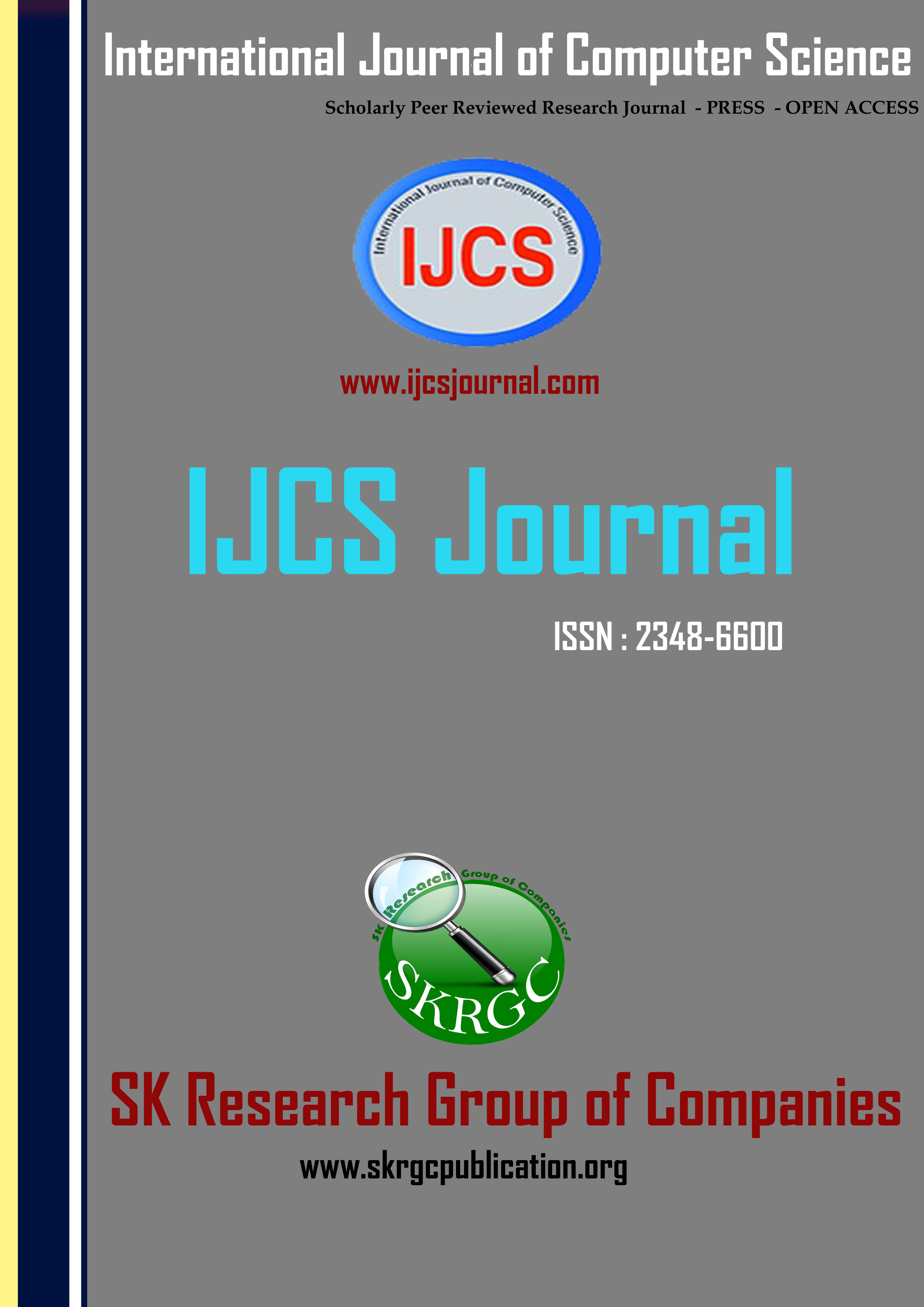METHOD OF INTRUSION DETECTION USING ENHANCED ADAPTIVE ACKNOWLEDGEMENT(EAACK)
International Journal of Computer Science (IJCS) Published by SK Research Group of Companies (SKRGC)
Download this PDF format
Abstract
The migration to wireless network from wired network has been a global trend in the past few decades.The mobility and scalability brought by wireless network made it possible in many applications.Among all the contemporary wireless networks, Mobile Ad hoc NETwork (MANET) is one of the most important and unique applications. On the contrary to traditional network architecture, MANET does not require a fixed network infrastructure; every single node works as both a transmitter and a receiver. Nodes communicate directly with each other when they are both within the same communication range. Otherwise, they rely on their neighbors to relay messages.The self-configuring ability of nodes inMANETmade it popular among critical mission applications like military use or emergency recovery. However,open medium and wide distribution of nodes make MANET vulnerable to malicious attackers.In this case,it is crucial to develop efficient intrusion-detection mechanisms to protect MANET from attacks.With improvements of technology and cut in hardware costs, we are witnessing a current trend of expanding MANETs into industrial applications. To adjust to such trend,we strongly believe that it is vital to address its potential security issues.In this paper, we propose and implement new intrusion-detection system named Enhanced Adaptive ACKnowledgment (EAACK) specially designed for MANETs.
References
[1] T.Anantvalee and J.Wu, “A Survey on Intrusion Detection in Mobile Ad Hoc Networks,” in Wireless/Mobile Security. New York: Springer-Verlag.
[2] D.Johnson and D.Maltz, “Dynamic Source Routing in ad hoc wireless networks,” in Mobile Computing. Norwell, MA: Kluwer.
[3] D.Dondi, A.Bertacchini, D.Brunelli, L.Larcher, and L.Benini, “Modeling and optimization of a solar energy harvester system for self-powered wireless sensor networks,” IEEE Trans. Ind. Electron..
[4] V.C.Gungor and G.P.Hancke, “Industrial wireless sensor networks: Challenges, design principles, and technical approach,” IEEE Trans. Ind.Electron..
[5] Y.Hu, D.Johnson, and A.Perrig, “SEAD: Secure efficient distance vector routing for mobile wireless ad hoc networks,” in Proc. 4th IEEEWorkshopMobile Comput. Syst. Appl.,
[6] K.Al Agha, M.-H.Bertin, T.Dang, A.Guitton, P.Minet, T.Val, and J.-B.Viollet, “Which wireless technology for industrial wireless sensornetworks? The development of OCARI technol,” IEEE Trans. Ind. Electron..
[7] R.Akbani, T.Korkmaz, and G.V.S.Raju, “Mobile Ad hoc Network Security,” in Lecture Notes in Electrical Engineering, vol. 127. New York: Springer-Verlag.
[8] R.H.Akbani, S.Patel, and D.C.Jinwala, “DoS attacks in mobile ad hoc networks: A survey,” in Proc. 2nd Int. Meeting ACCT, Rohtak, Haryana, India.,
[9] Y.Hu, A.Perrig, and D.Johnson, “ARIADNE: A secure on-demand routing protocol for ad hoc networks,” in Proc. 8th ACM Int. Conf. MobiCom, Atlanta, GA.
[10] G.Jayakumar and G.Gopinath, “Ad hoc mobile wireless networks routing protocol—A review,” J. Comput. Sci., vol 3.,
[11] L.Buttyan and J.P.Hubaux, “Security and Cooperation in Wireless Networks”. Cambridge, U.K.: Cambridge Univ. Press.,
[12] N.Kang, E.Shakshuki, and T.Sheltami, “Detecting forged acknowledgements in MANETs,” in Proc. IEEE 25th Int. Conf. AINA, Biopolis,Singapore.
[13] K.Kuladinith, A.S.Timm-Giel, and C.Görg, “Mobile ad-hoc communications in AEC industry,” J. Inf. Technol. Const.,.
[14] J.-S.Lee, “A Petri net design of command filters for semiautonomous mobile sensor networks,” IEEE Trans. Ind. Electron.
[15] A.Tabesh and L.G.Frechette, “A low-power stand-alone adaptive circuit
for harvesting energy from a piezoelectric micropower generator,” IEEE
Trans. Ind. Electron.,
Keywords
MANET,NODES,EAACK

